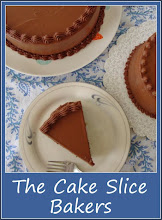I enjoyed the outcome of my first experiments with my new food dehydrator a few weeks ago and decided to experiment some more. The first time around I kept things safe and simply tried dehydrating some slices of apple and pear. This worked well but I learnt that you have to keep your slices fairly thick and chunky if you want to achieve soft and squishy dried fruit. The first time I cut my apple and pear slices quite thin which resulted in dried fruit that was halfway to being a fruit crisp as it dehydrated to practically nothing. Tasty yes, but not what I was after.
This time around I cut my fruit chunkier and also experimented with some different fruits. Apple, nectarine, blueberries, plum and ….carrot! (A rogue vegetable)
I get strangely excited by new gadgets and experimenting with food. There is always the eager anticipation as to what will be produced. I layered up the fruit, set a time for 5 hours and left it to do its thing.
On the base layer I put apple and nectarine quarters. The apple slices turned brown during the dehydration process as I didn’t dip them in anything acidic or chemical, I rather liked their appearance. They looked almost like they had been caramelised or dipped in cinnamon. Being chunkier, they also retained some of their moisture this time. Juicy and slightly firm, yet not crisp. The apple flavour was really pronounced too. Very good.
The nectarine slices kept their colour, if fact they turned positively golden! They took on a slightly withered appearance but this turned them deliciously chewy and sticky. A very successful dried fruit replica and their flavour and sweetness intensified due to the drying. My favourite of the lot.
I was unsure what would happen to the blueberries. I had read it was advised to place them on baking paper so they didn’t fall through the gaps in the grating as they dried. I was unsure how successfully they would dehydrate, being as they are sort of enclosed in their own skin. I had wondered if I should prick them with a knife to help some of the moisture escape, but in the end I just left them as they were. Below is a before and after shot. You may notice they don’t look particularly dried out and they weren’t, but the drying still altered their flavour and texture. They were soft yet with a firmer texture than before, not so fleshy or juicy. Their flavour had also intensified, making them actually taste like a really good blueberry, rather than a water mush with a hint of berry flavour. A good standby for improving their flavour of winter, but I think it may be more worthwhile just waiting to buy them in the summer when they are in season. I don’t think you can get quite the same dried blueberry result as ones sold in shops. Those are probably dried for days and coated in sugar. An interesting experiment nonetheless.
For the plums I simply cut off the cheeks either side of the stone. These dried in such a way that they ended up looking like poppy heads. Darker centres surrounded by a crinkled red skin. Rather attractive really. In terms of eating, I couldn’t decide whether I liked them or not. They stayed strangely crisp and get more chewy than juicy. Their flavour had intensified but it also brought out a slightly bitter note. They were nice dipped in peanut butter, but I’m not sure I’d make them again. Maybe I was just unlucky and used a bland tasting plum to begin with.
Now the mystery addition to the range – carrot coins! You don’t see many dried vegetables amongst the dried fruit snacking options and it turns out there is a good reason for this – they don’t taste very nice! The carrot probably dehydrated the most successfully, becoming shrivelled and crinkled on drying, probably due to its lower moisture content to begin with. I was quite excited when I saw them, but unfortunately they were not pleasant to eat. Have you ever found a really old carrot in the back of your fridge? One that’s turned shrivelled and bendy and yet somehow still breaks in half with a snap? Well, this was what happened to the carrot coins. Soft around the edge but oddly crisp and a little bendy. They did taste strongly of carrot, but I ended up feeling like I was eating a really old carrot, rather than a nicely dried one. I intend to try making carrot crisps using paper thin slices of carrot, but I don’t recommend carrot coins – leave those to the instant noodle snack people!
The only drawback I discovered to having the fruit juicer and free from any preservatives or nasties is that they went mouldy after 4 days. So I’d recommend either eating them quickly or else refrigerating or freezing them.
I’m having so much fun experimenting – anyone got any suggestions or good recommendations as to what I should try next?






























